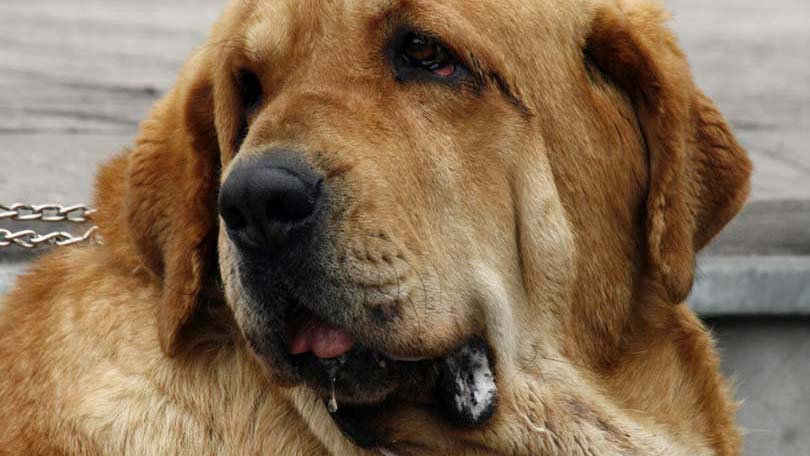
Like their human counterparts, male dogs over 8 years old are prone to developing prostate problems in life. These can include enlargement of the prostate, prostatic cysts and prostitis. Prostate cancer in dogs is of particular concern, and all prostate issues in dogs require careful medical attention and intervention to prevent painful and potentially life threatening complications.
The prostate gland is a structure that lies behind the bladder and below the rectum of the dog. The function of the prostate gland is primarily for breeding purposes, as prostatic fluid provides nourishment to sperm, and volume to ejaculated liquid. When not used for breeding, small ducts in the prostate deposit fluids produced there into the urethra to be expelled in urine. The prostate gland begins to develop in young dogs as they reach puberty, and its ultimate size is primarily determined by the hormone testosterone.
Because testosterone helps to develop the prostate gland, dogs neutered before puberty, will have a very small prostate gland throughout life. Dogs neutered later in life will slowly experience a shrinking of the prostate gland, once the testosterone begins to leave their system. In time, the functioning cells in the prostate will stop almost all production of prostatic fluids.
Signs of Prostate Cancer in Dogs
Because of the proximity of the prostate to the rectum, almost all forms of prostate problems will first manifest as pain and difficulty defecating. As the diseased prostate increases in size, it begins to push up against the rectum, decreasing the space for stool to pass. Dogs with prostate problems will often walk abnormally and stiffly, avoiding putting pressure on the painful gland.
Other signs of potential prostate problems include discharge of blood or pus from the penis, pain or difficulty urinating, and even an infection in the abdominal cavity caused by bacteria leaking from the prostate gland.
The most common prostate problem in dogs is called Benign Prostatic Hyperplasia. This condition is caused by the normal aging process of the gland, as it increases in size and production of cells. This gradual enlargement can become a source of constant discomfort to the dog, as well as lead to problems urinating and defecating.
Dogs with Benign Prostatic Hyperplasia can alsodevelop cysts, small fluid filled pockets, which can increase in size and further aggravate the already painful prostate.
Bacteria from the blood or urinary tract can sometimes get into the prostate, causing a bacterial infection. While bacterial infections in the blood or bladder can be easily treated with antibiotics, once the bacteria enters the prostate, it becomes a much more difficult problem to treat. The early stage of a bacterial infection of the prostate is very painful, and can spread throughout the body, causing fevers and even systemic illness. If the infection is not cured in the early stage, it can become a chronic condition, causing scarring and sometimes depositing pockets of pus into the gland.
Because testosterone encourages the prostate gland to increase in size and the production of fluid, the best treatment for most prostate problems is to neuter the intact male. Castration both prevents Benign Prostatic Hyperplasia from developing, and is also the way to cure it. Neutering dogs with prostatic cysts and inflammation of the prostate (Prostatitis) can be very beneficial as an effective treatment for the problem, as well as significantly reducing the chances of reoccurrence. Bacterial infections must be treated with a well-targeted approach of antibiotics, but once again neutering will help to prevent further infections by reducing the size of the prostate.
While prostate cancer in humans is 2nd largest cause of cancer of men in the United States, prostate cancer in dogs is not nearly as common. However, dogs can develop cancer of the prostate, and when they do it is a serious and life-threatening condition.
Prostate cancer in dogs is most often found in dogs over 10 years old, and it can be difficult to diagnose. Almost all prostate cancers occur in male dogs that are unneutered, so the best prevention against prostate cancer is castration.
Cancer of the prostate is frequently inoperable, due to the location of the gland, and it’s proximity to many other important structures and nerves. Chemotherapy and radiation therapy are generally the only potential treatments, however neither of these shown to greatly increase the long-term survival of dogs with prostate cancer. Frequently prostate cancers are diagnosed late in the course of the disease, and by the time they are discovered they may have spread throughout the body to the lymph nodes, lungs, kidneys and other vital organs. Once the cancer has begun to spread from the prostate, there is no cure.
Prostate cancer in dogs, as well as most of the other common prostate problems in dogs all have one thing in common- they can all be prevented or greatly reduced in severity by having your male dog neutered. With the problems of pet overpopulation, all non-breeding male dogs should be neutered in order to prevent unwanted pets. Given the advantages to having a neutered dog, the decision to have your dog neutered may be one of the most proactive things that can be done for his health and longevity.





